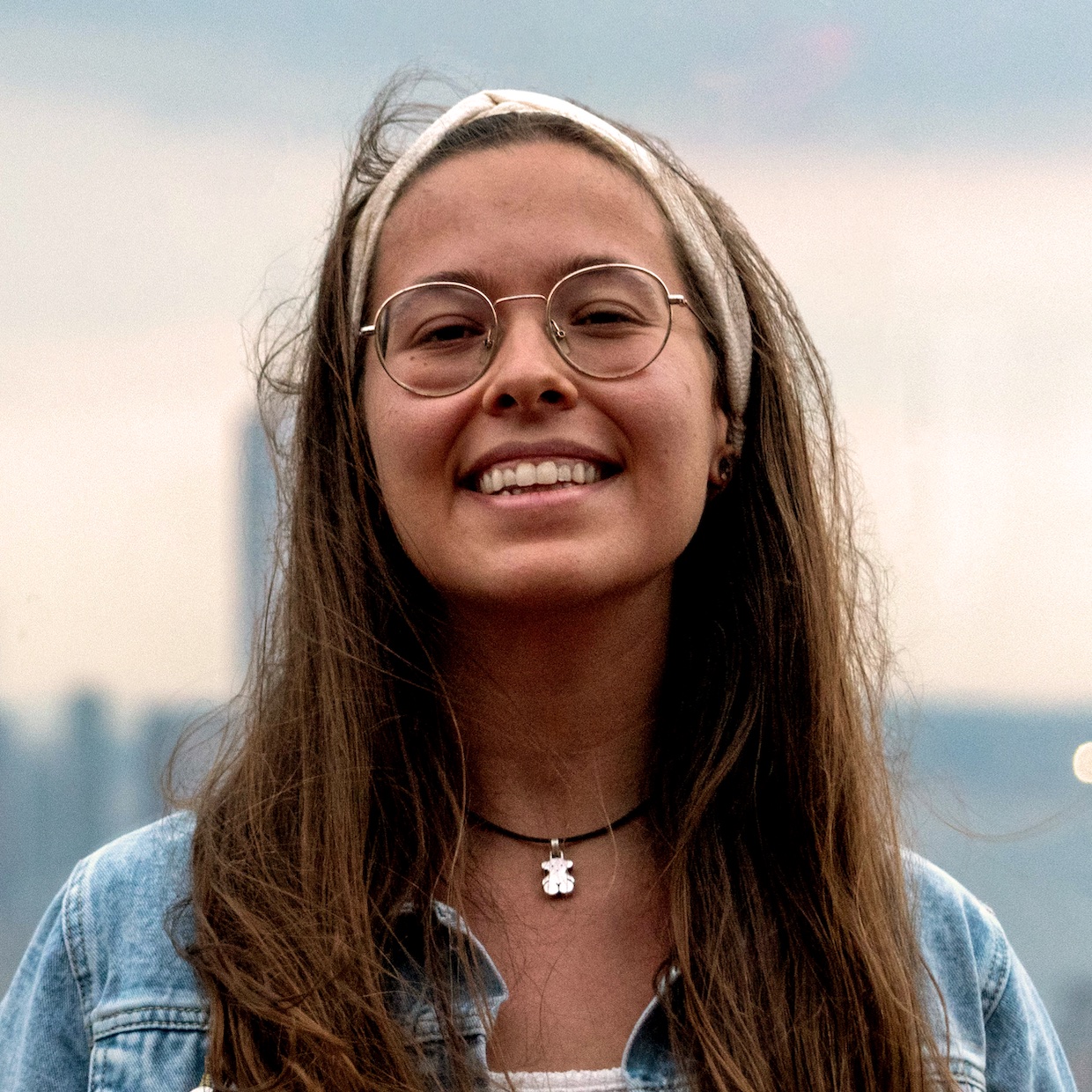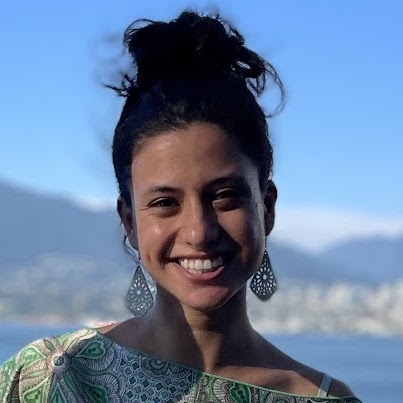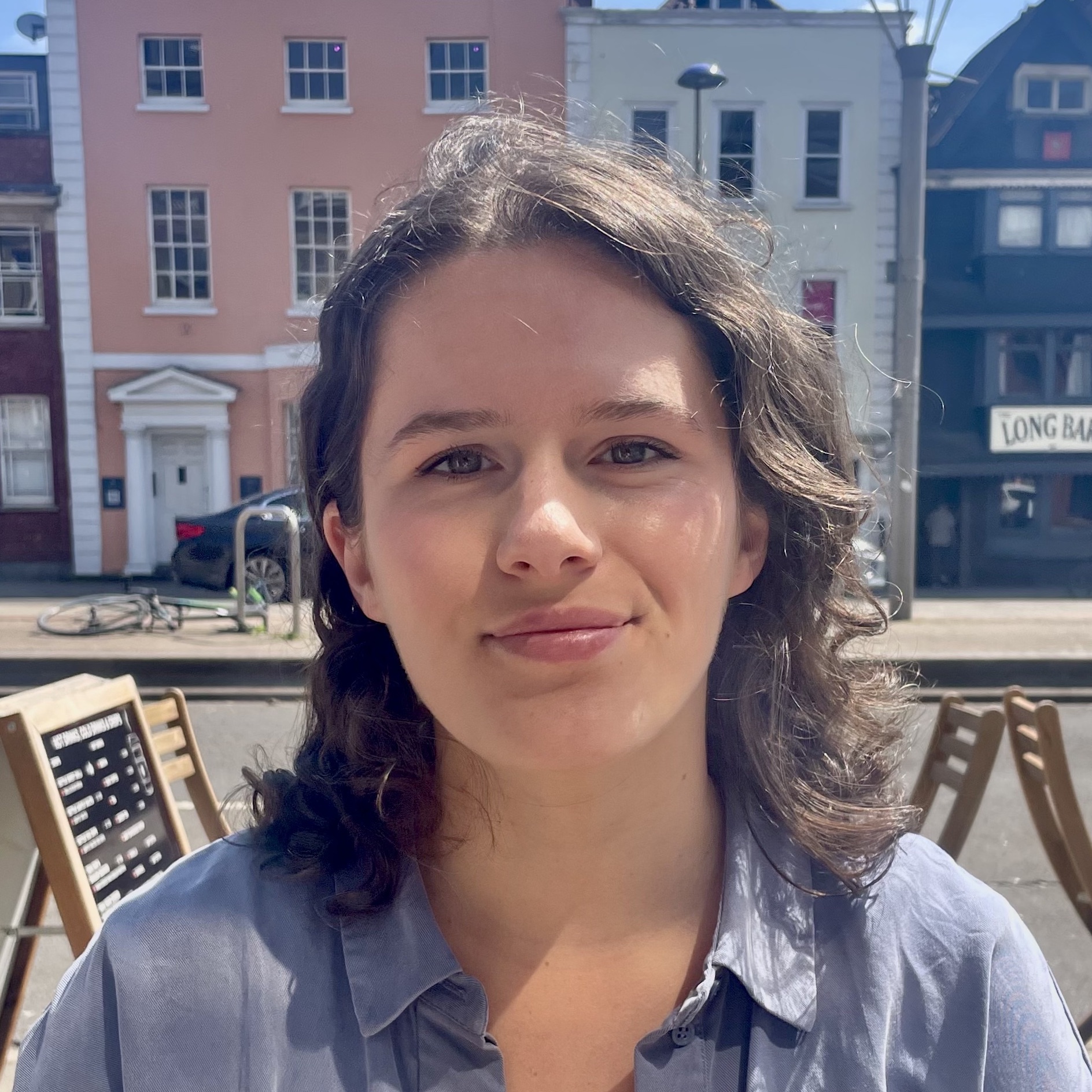Meet the 7 up-and-coming researchers selected to participate in WiGRAPH’s Rising Stars program, a two-year program of mentorship and workshops co-located with SIGGRAPH 2023 and 2024 to explore potential career trajectories as they enter the job market.
Click on any of our Rising Stars to learn more about them!
Meet Shivangi Aneja

Research Vision: Modelling high-quality 3D human avatars serves as a cornerstone to many content creation applications including video games, movies and virtual assistants. However, the process of developing lifelike 3D human avatars requires extensive time and effort from highly-skilled artists. To expedite this content creation process, my research focuses on developing algorithms to generate lifelike and immersive 3D digital humans with expressive capabilities, by using user-friendly text prompts. This enables intuitive control over 3D content creation process. Recent vision-language models are extremely powerful in creating high-quality 2D imagery with language supervision; however, these cannot be directly applied to 3D models. My research aims to bridge this gap by developing algorithms to leverage powerful 2D models to synthesize high-quality 3D avatars. My research goal is to significantly speed up 3D model creation to help highly-skilled artists and content-creators. Additionally, I am committed to exploring novel approaches to mitigate potential misuse of these models and promote responsible use.
Bio: Shivangi Aneja is a PhD candidate at Visual Computing and Artifical Intelligence Group advised by Prof. Matthias Niessner at Technical University of Munich, Germany. Prior to that, she obtained a Master's degree in Informatics from Technical University of Munich and Bachelor's degree in Computer Science from National Institute of Technology, Hamirpur, India. Her Master's thesis earned highest honors, and was awarded Best Master Thesis Award for research excellence at DGOF Conference. During her undergrad, she was awarded gold medal for academic excellence. Her PhD research focuses on developing algorithms to generate lifelike and immersive 3D digital humans with expressive capabilities. Additionally, she also develops novel approaches that can thwart the malevolent usage of such generative models. Her work has been published at premier computer vision/graphics conferences including SIGGRAPH, CVPR, ECCV, AAAI. In her free time, she enjoys vising new places.
Meet Julia Guerrero Viu

Research Vision: Our visual perception of the world is strongly influenced by material appearance. While humans have an innate ability to recognize materials and their properties, such as glossiness or softness, these characteristics emerge from intricate and not fully understood interactions between different factors, including surface reflectance, illumination, or geometry. Therefore, understanding the complex nature of human perception of materials remains a significant scientific challenge. In light of this, my research tries to shed light on how our brains visually perceive materials in order to build perceptually-based representations of appearance for visual content creation. Through a multidisciplinary approach, integrating knowledge from computer graphics, natural language processing, computer vision, and perception science, we aim to bridge the gap between human perception and computational models, enabling more realistic, intuitive, and immersive visual experiences.
Bio: Julia is a second-year PhD candidate at the Graphics and Imaging Lab, University of Zaragoza (Spain), supervised by Prof. Belen Masia and Prof. Diego Gutierrez. Previously, she obtained a Bachelor's in Computer Engineering at the University of Zaragoza (Spain) and a Master's in Computer Science with specialization in Artificial Intelligence at the University of Freiburg (Germany). During the summer of 2023, she is currently interning at Adobe Research in San José (California, USA) under the mentorship of Dr. Valentin Deschaintre. Her research interests lie within the fields of computer graphics, perception science, computer vision, and deep learning. In her free time, she loves volunteering in scientific outreach activities and raising visibility of women in STEM. Her hobbies include acting as an amateur theater actress, playing piano, reading, and hiking.
Meet Sarah Jobalia

Research Vision: My research focuses on diversity and representation in virtual hair. Hair is central to how we identify and express ourselves, yet artist tools don’t equitably represent the full range of hair types. Computer Graphics research on hair has historically centered straight hair as the primary technical challenge, with fewer papers addressing the physics and structure of curly hair and virtually no research on kinky hair. By focusing on how the physical properties of hair change with hair type and texture, my research aims to help artists create hair of all types and styles with ease.
Bio: Sarah Jobalia is a third-year PhD student at Stanford University in Computer Graphics. She holds a MS in Computer Science and a BS in Mathematics from Stanford University as well. Before beginning her PhD, Sarah worked on Microsoft’s DirectX team in Seattle for two years. Sarah’s research has been supported by the National Academy of Science’s Ford Foundation Fellowship and the Stanford Center for Comparative Studies in Race and Ethnicity’s Technology & Racial Equity Graduate Fellowship. During her time at Stanford, Sarah has served on the School of Engineering Dean’s Graduate Council, the Computer Science Graduate Advisory Council, the Computer Science Department Admissions Committee, and as chair of the graduate division of Women in CS. Sarah has a passion for teaching, has twice been awarded the Stanford CS teaching assistant bonus for outstanding work, and will be leading a class at Stanford this Summer. In her free time, Sarah enjoys learning different art forms, and specifically loves book binding and ceramics!
Meet Sarah Kushner

Research Vision: My research focuses on advancing storytelling techniques in the physical world. Large interactive physical displays like those seen in theme parks, museums, and art exhibits are often left to professionals to design and create and are seemingly out of reach for everyday people.
I want to expand the type and complexity of stories that people can easily tell. In the beginning of my PhD, I worked on an algorithm to generate hidden support structures of rods and wires used in a story that needs an object or character to be floating. I incorporated this technique into a large-scale interactive zoetrope display where 3D scenes sit around a spinning bike wheel to create the illusion of motion.
Now I am working on designing an affordable zoetrope kit for students to tell their own stories while learning animation principles and gaining the technical skills it takes to build one. In the future, I am planning to bring animatronics kits into high school classrooms. Using paper characters controlled by motors and microcontrollers combined with simple crafting, students can make their lessons come to life.
Bio: Sarah Kushner is a PhD Candidate at University of Toronto in the Dynamic Graphics Project lab where she works on fabrication-based storytelling techniques. Previously, she completed her MS at Grenoble INP and her BS at Drexel University in Philadelphia, where she studied Animation and Visual Effects before changing her focus to Computer Science. In 2022, she received a Mitacs Globalink Research Award to support a visiting PhD student position in the BioShape lab at UC Santa Barbara. In 2020, Sarah also helped design a mentorship program for Toronto-area high school girls at HER CODE CAMP. In her free time, Sarah draws, paints, plays video games (poorly), watches comedy, and does gymnastics.
Meet Emilie Nogué

Research Vision: As a photonics engineer, I focus on exploiting the physical dimensions of materials in computer graphics. I am interested in exploring the effects generated by the wave nature of light, such as polarization, diffraction, interference and fluorescence, and aim to simulate them on a larger scale. During my PhD, I have worked on a method for building appearance maps using polarization images. I plan to improve BRDF models by utilizing polarization measurements, to bridge the gap between analytical and data-driven approaches. Additionally, I have conducted research on affordable measurements of optical properties in translucent materials and am currently on fluorescence, which has untapped potential in computer graphics. I aim to continue my research by combining traditional optical methods with computational photography for more comprehensive data analysis. By leveraging simulations and deep learning, I seek to unlock the valuable information captured in these measurements, addressing the limitations of time and complexity in physically based rendering. Ultimately, I strive to develop new approaches that integrate experimental and synthetic data, enabling faster and more accurate representation and establishing novel radiometric and polarimetric metrics for rendering benchmarks.
Bio: Emilie Nogué is a third-year PhD student under the supervision of Professor Abhijeet Ghosh at Imperial College London. As an Early-Stage Researcher within the Marie Sklodowska Curie PRIME network, she has collaborated with various institutions in Europe, including Charles University in Prague and EPFL in Switzerland. Prior to working on her PhD, Emilie obtained a Masters of Science degree in Photonics Engineering from the Institute of Optics Graduate School in France, with a specialization in Computer Science and Entrepreneurship.
In her spare time, Emilie enjoys photography due to the cultural and artistic dimensions of this tool, which she incorporates into her everyday research. She also loves reading, climbing and aerial circus.
Meet Yingying (Samara) Ren

Research Vision: My research focuses on geometric computing, physics-based simulation, and numerical optimization. Leveraging the advancements in digital fabrication technology, such as 3D printers and high-precision CNC machines, my work aims to transform interesting geometric theories and algorithms into complex physical structures with novel behaviors.
One of the main aspects of my research is solving inverse design problems. Inverse design problems are ubiquitous in our daily lives, ranging from designing personalizing medical devices to constructing lightweight, structurally robust, and energy-efficient architectural-scale buildings.
My passion for geometry is the driving force behind my research. I have discovered that geometric insights are often fundamental in our search for efficient solutions to inverse design problems. Good geometric representations often provide crucial shortcuts for continuous numerical optimization.
I am committed to pushing the frontiers of digital fabrication technology, creating accessible computational tools, and solving theoretical and real-world challenges.
Bio: Samara is a fourth-year PhD student in Computer Science at EPFL, Switzerland. Her advisors are Mark Pauly (EPFL) and Julian Panetta (UC Davis). Her research focuses on geometric computing, physics-based simulation, and computational fabrication. Previously, Samara completed her Bachelor’s degrees in Computer Science and Mathematics at UIUC, where she did research in computational geometry and robotics. She has interned at Google and Samsung Research America during her studies. Samara has been an executive member at WiGRAPH since 2021.
Meet YunFan Zhou

Research Vision: My research aims to address the limitations of modern modeling tools by focusing on mesh processing and generating methods for animation, simulations, and modeling applications. Despite technological advancements, existing modeling tools fall short in meeting fundamental requirements across various domains, including aerospace, industrial design, and artist sculpting. Notably, the generation of high-quality triangle meshes from displacement surfaces or NURBS representations presents persistent challenges for elastic simulations, automatic skinning, and modeling tasks. My research focuses on developing robust and efficient implementations by leveraging the capabilities of classic remeshing pipelines to produce adaptive, high-quality meshes that are free of self-intersections and tailored to the specific modeling needs of users. Besides ensuring robustness to handle diverse input geometries, I also seek to employ parallel computing techniques that optimize for efficiency.
Bio: YunFan is current PhD student at NYU Geometry Computing Lab advised by Daniele Panozzo and Denis Zorin. She is a MacCracken Fellow at NYU. She graduated from University of Texas, Austin with a B.S. in CS and a B.S. in math. In her free time, YunFan likes to immerse herself in the vibrant cultural scene that New York City has to offer. She is a frequenter of art exhibitions, concerts, and dance performances. And she believes that good food and good coffee make a good life.



